Great Planes Kunai ARF
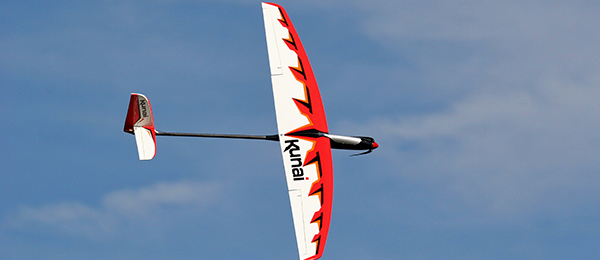
Watch a video and read about this glider capable of high-speed aerobatics or leisurely soaring. Article, photos, and video by Tom Sullivan. Read the full article in the July 2015 issue of Model Aviation Digital.
Specifications
Model type: ARF sailplane Skill level: Intermediate and advanced pilots Wingspan: 55 inches Wing area: 308 square inches Airfoil: Flat bottom Length: 36 inches Recommended weight: 20 to 21.5 ounces; test model (ready to fly): 22 ounces Power system: ElectriFly 22-12-10 motor; 3S 1,200 mAh LiPo battery; 20-amp ESC; 8 x 6 folding propeller Recommended radio: four to five channels; four micro servos; one Y-harness (no spoilerons); or two 3-inch servo extensions (spoilerons) Street price: $129.99 (ARF version); $199.99 (receiver-ready version, as used in this review)Features:
• Built-up wings, fiberglass fuselage, and carbon-fiber tailboom • Precovered airframe • Includes a 1,400 Kv outrunner brushless motor and folding 8 x 6 propeller • The receiver-ready version comes with a 20-amp brushless ESC and four micro servos • All control surfaces are prehinged at the factory • An aileron servo in each wing panel makes installation easy and allows mixing for spoileron and differential • The quick-release canopy/hatch is held in place with a magnet for quick access to the battery • It can go from box to ready-to-fly in just a couple hours • A great combination of a slow-speed sailplane and high-powered, high-speed sport flierNotes:
• There are no provisions for an arming switch; however, if using the power setup in the review, there is a built-in safeguard (see text). • There are a few wrinkles out of the box that can be quickly removed with a heat gun. The top wing can develop a few wrinkles after a day’s worth of flying. So why did Great Planes name this little sport glider Kunai, and what the heck is a kunai anyway? Simply put, a kunai is a Japanese tool, possibly derived from a masonry trowel. This basic tool, in the hands of an expert, could be used as a multifunctional weapon. Great Planes has described the Kunai as “aggressive climbing, exciting, high-speed aerobatics, soaring, offering the best of all worlds.” It seems like a tall order for a little power glider, so let’s see if it lives up to its name.Construction
The Kunai is available in ARF and receiver-ready versions. This review covers the receiver-ready model, which comes with the servos, motor, and speed control all preinstalled. If you’d like to see the steps in detail, the Kunai’s manual is online at http://manuals.hobbico.com/gpm/gpma1815-1816-manual.pdf. To say there is a low parts count would be an understatement. I counted 10 airframe components and a small bag containing a half dozen pieces of hardware. Rounding out the contents are a sticker sheet and 16-page manual. The wing halves are built-up from balsa and plywood. Both the vertical fin and the horizontal stabilizer are from sheet balsa and hardwood. All of the flying surfaces are covered with an iron-on film and all the control surfaces are preattached using some sort of transparent tape. The fuselage is made from a molded fiberglass cockpit section and a long carbon-fiber boom. Joining the wing halves together is the first step. Using a couple of alignment pegs, the two halves are epoxied together. A plastic wing-bolt plate is added to the rear of the center section and that completes the wing. While that’s drying, work moves to the fuselage where the tail surfaces are first dry-fitted, then epoxied into position. The last piece to glue in is the elevator joiner to make the two elevator halves move as one. And just that quickly, the construction of the Kunai’s airframe is complete. Next is installing the receiver. The manual recommends a couple of Futaba receivers, but nearly any small receiver could be used as long as it has end connectors. The small fuselage won’t allow using a receiver with connections that come out of the top. Because of the thick fiberglass and carbon fiber used in the fuselage, I would recommend using a receiver that can work in composite airframes. Because the servos and pushrods are already in place, hooking up the control surfaces a breeze. Up front, you’ll find that the motor and ESC are preinstalled and wired to accept a Deans-type connector. This space is also quite tight and only fits a 3S 1,300 mAh (or smaller) battery. All that’s left is to bolt on the propeller hub that uses a couple of small hex screws to hold it on the motor shaft. The folding propeller is bolted on the hub and the bright red spinner is held in with a single screw. So, that’s it. Other than adding stickers, the receiver-ready Kunai is finished. You can go from the box to ready to fly in only a couple of hours. Because all of the components in the Kunai were the same as recommended by Great Planes, it balanced right on the center of gravity (CG). If you use different items, you may have to adjust the CG, but that may not be easy with the small spaces inside the fuselage. I set up the Kunai for spoilerons, allowing me to throw both ailerons either halfway or all the way up to give the effect of spoilers in case I need them to help with landing.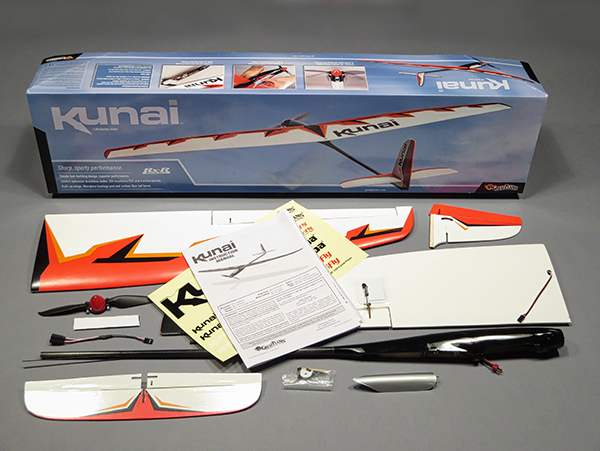
The Kunai’s parts count is quite low. It can go from the box to ready to fly in only a couple hours.
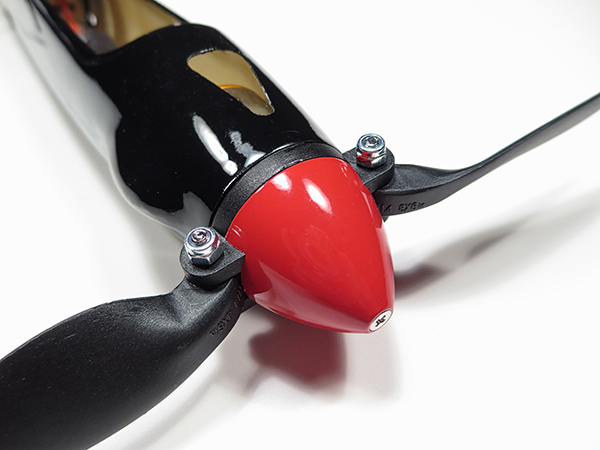
Included in the kit are a nice, purpose-built folding propeller and the spinner assembly.
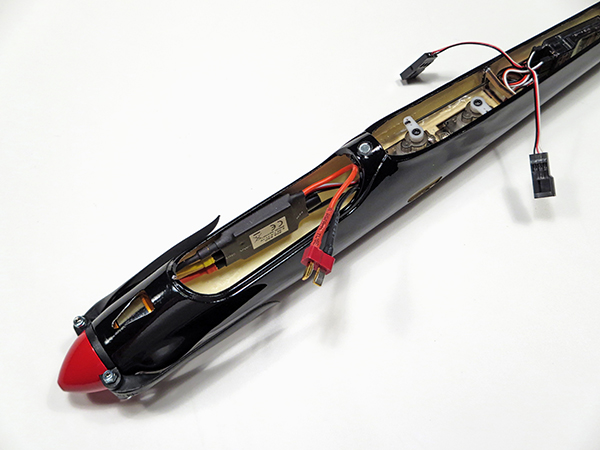
Be sure to consult the manual when selecting your radio gear. Because of the narrow fuselage, there isn’t much room for variation on the components.
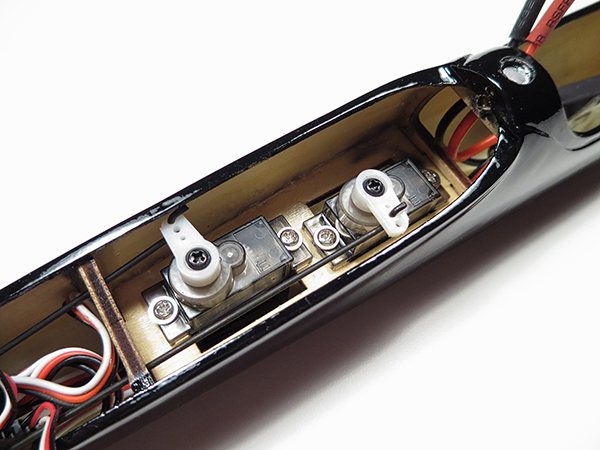
Micro servos are required throughout the Kunai. Tactic TSX5 Micro High-Speed servos were used in the review model.
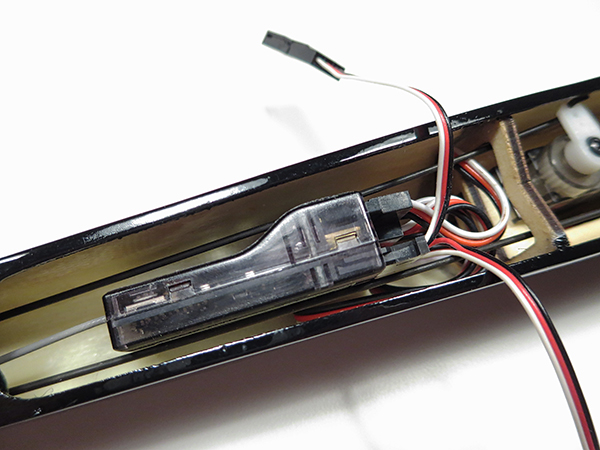










1 comments
Ersatzhaube für Kunai
Add new comment